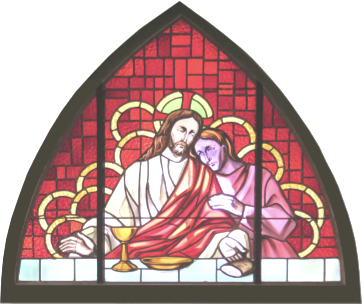Dear brothers and sisters in Christ,
One of Advent’s greatest treasures, especially in the days directly leading up to Christmas, is the the ‘O antiphon’ tradition. Many who may not be acquainted directly with the O antiphons will likely know them through the verses of the much loved hymn O Come O Come Emmanuel. The O antiphons are used as antiphons for the Magnificat each of the seven days leading up to Christmas in the Catholic Church’s evening prayer, and are generally used as part of the Gospel Alleluia at Mass those days. The tradition dates back to the early Middle Ages. In more recent times, some Anglican, Lutheran and Presbyterian churches also incorporate the O antiphons in their prayer and devotional life.
Each O antiphon draws on a prophecy from Isaiah; each offers a title for the promised Messiah and expresses our longing and need for God to come into our world. The original prayers were of course written in Latin. Let’s take a look at one of them in more detail. Isaiah had prophecied, “The people who walked in darkness have seen a great light; those who lived in a land of deep darkness—on them a light has shone” (Is. 9:2). The O antiphon begins, “O Oriens,
splendor lucis aeternae,” O Morning Star, splendour of light eternal and sun of righteousness:
Come and enlighten those who dwell in darkness and the shadow of death.” We know this as the verse from O Come O Come Emmanuel as follows:
O come, Thou Dayspring, from on high,
And cheer us by Thy drawing nigh;
Disperse the gloomy clouds of night,
And death’s dark shadows put to flight.
Each verse of the hymn ends with the invitation:
Rejoice! Rejoice! Emmanuel
Shall come to thee, O Israel.
And so the days leading up to Christmas unfold, as do the verses of the hymn, and we pray:
O come, Emmanuel, ransom us from our captivity;
O come, Thou Rod of Jesse, give us victory o’er the grave;
O come, Thou Wisdom from on high – teach us in her ways to go;
O come, Desire of nations, bind all peoples in one heart and mind; bid envy, strife and quarrels cease; fill the whole world with heaven’s peace.
It is helpful that we have multiple images from the prophets for the Messiah who was to come. As Christians we have four Gospels who speak of Jesus’s life and ministry from different perspectives. The Incarnation is a vast mystery, and each prophecy gives us a language to understand something of what God desires to do for us. They tap into our own need for wisdom, for leadership and covenental love, for freedom from what binds us, light within our darkest days, for God walking with us.
St Augustine, in an ‘O’ prayer of his own, prays to God, “O Beauty ever ancient, ever new,” and that has set me to pondering how the glories of our heritage still speak to the deepest yearnings of our hearts; and that today we too are to give new expressions to those deepest yearnings within us. The Jewish roots of the prophecies bring to mind new expressions of yearnings in our day from that same tradition. I don’t know if Leonard Cohen had the O antiphons in mind when he wrote to song Come Healing, but he might have.
O solitude of longing
Where love has been confined
Come healing of the body
Come healing of the mind.
O see the darkness yielding
That tore the light apart
Come healing of the reason
Come healing of the heart.
And finally:
O let the heavens falter
And let the earth proclaim:
Come healing of the Altar
Come healing of the Name.
So here’s an invitation and a challenge, friends. As you prepare to welcome the Lord’s birth, take some time to listen to the deepest yearnings in your heart. And in the refining of prayer, see if those yearnings might take the shape of a prayer or two, your own O antiphons.
O font of mercy, O God of all grace, come be with us in this time of pandemic. Let us know your healing presence, let us see your face.
God bless.
Watch video message HERE
